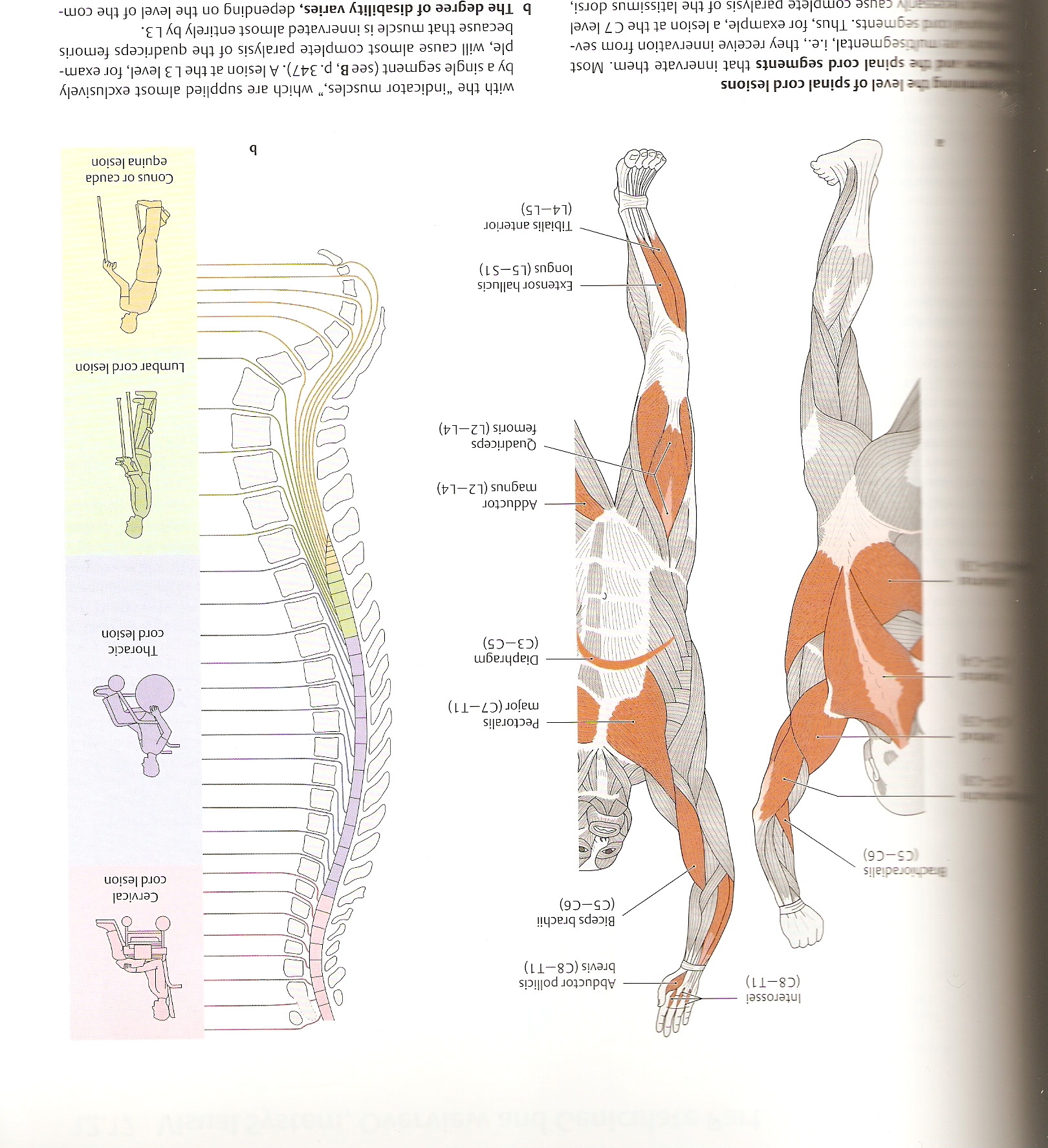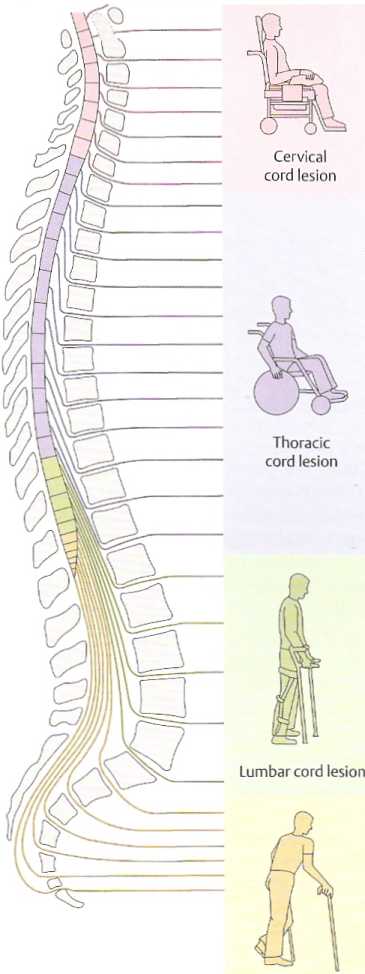51088 skanuj0031 (110)

Interossei
(C8-T1)
i

Abductor pollicis brevis (C8—Tl)
Biceps brachii (C5-C6)

Pectoralis major (C 7—Tl)
Diaphragm
(C3-C5)
Adductor magnus(L2—L4)
Quadriceps femoris(L2—L4)
Extensor hallucis longus (L5—SI)
Tibialis anterior (L4-L5)

Conus or cauda equina lesion
±'= level of spinał cord lesions tfte spinał cord segments that innervate them. Most ■hafcisegmental, i.e., they receive innervation from sev-segments. Thus, forexample, a lesion at the C7 level
ranse rnmnlete naralysis of the latissimus dorsi. b
with the “indicator muscles,” which are supplied almost exclusively by a single segment (see B, p. 347). A lesion at the L 3 level, for exam-ple, will cause almost complete paralysis of the quadriceps femoris because that muscle is innervated almost entirely by L3.
The dearee of disability yaries, depending on the level of the com-
Wyszukiwarka
Podobne podstrony:
82 (182) 5.5.1 Therapy for the abductor pollicis brevis. StartingPosition: P: Supine or sitting; elb
autostretching0247 INDEX OF MUSCLE NAMES abductor pollicis brevis 60 abductor pollicis longus 56,6
202 2 Kończyna górna M. opponens pollicis M. abductor pollicis brevis M. flexor pollicis brevis, Cap
5 27 Supinator Abductor pollicis longus Proximal attachment to dorsal radius and interosseus membran
skanuj0014 (110) ig*SSI ierę. jest przej-Bkszość z nich rtaóre bakterie fca w stanie ich tae transpe
skanuj0015 (110) Numer ciągu Numery punktów nawiązania i punktów poligonowych Średnie
skanuj0019 (110) ....... _
skanuj0021 (110) - : u * ) - (■< ■ v_ -J i ir"] i J P x J • ■- ,,)) ^ ^
skanuj0024 (110) Są cjLotoi tloM* MHtcilOjtelAM rjJ2
więcej podobnych podstron